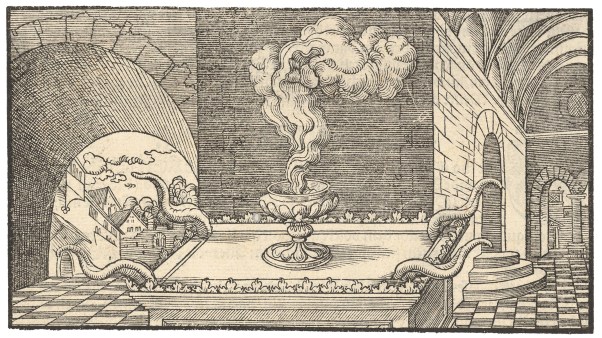It was considered the next most severe punishment after execution to be given a life sentence in the galleys. Since Knox and the Castilians [those Protestants who had resisted at St. Andrews Castle in 1547] had not been sentenced by any court, they did not know how long their torment would last. Torment was the word Knox used to describe his situation, as well as affliction. Yet he wrote surprisingly little about his time in the galleys. It must have put iron in his soul as well as his wrist.
A French galley around this time was between 100 feet and 150 feet long, 30 feet wide and stood only 6 feet above the water line, making it unsuitable for heavy seas, so that it could only sail the North Sea route to Scotland in summer. In winter the daily ration of soup, biscuit, and water was supplemented by wine. The two winters he spent on shore were probably the saving of Knox.
The 150 galley slaves, or forsairs, rowed six to the oar, and the 25 oars were about 45 feet long and passed through the sides of the ship. [The rowers] were kept chained to the oar when not doing other duties, such as sail-mending, and were given a uniform consisting of a coarse brown tunic, a vest, two shirts, and two pairs of canvas breeches. A red cap was issued, but shoes were only given out for shore duty, in case the other forsairs tried to escape. Many were convicts and other prisoners of war.
A comites was there to make sure that they pulled their weight and, in each section of the ship, souscomites, who carried whips. The comites on Knox’s ship do not seem to have been sadistic or cruel. The usual practice was to require only one-third of the forsairs to row at a time, except in emergency.
Throwing Our Lady overboard
Knox was in his prime at 33 years of age and, apart from one severe bout of illness, seems to have survived well. He was not the kind of man who would have attracted attention, either by cringing or by provoking the comite through truculence. The strong will and spirit he evidenced throughout the rest of his life would have served him well for the ordeal. Above all, he and the Castilians had their Christian faith, and the parallels with St. Paul’s voyages and imprisonments would no doubt not have been lost on them.
One interesting illustration of the apparent tolerance of the comite emerges from Knox’s History. He was rather ironically billeted in a galley with the name of Nostre Dame [“Our Lady”], which had gone around Brittany to winter at Nantes at the mouth of the Loire. [“Hail, Holy Queen”] was sung, a little statue of Our Lady was brought round for kissing. Knox would have none of it, but it was thrust in his face. He waited until no one was looking and threw the statue overboard, declaring, “Now let our lady save herself; she is light enough, let her learn to swim!” He wrote with relish that there were no more attempts to force them to submit to “idolatry” after that.
Copyright © 1995 by the author or Christianity Today/Christian History magazine. Click here for reprint information on Christian History.










